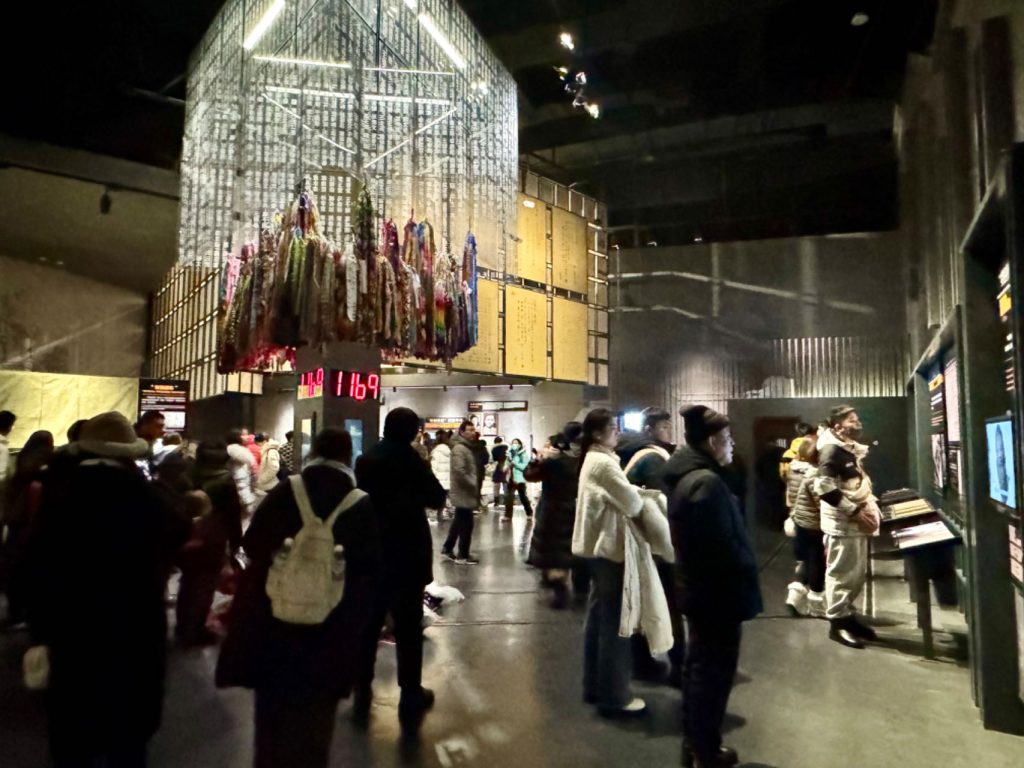A solemn pilgrimage: visitors nationwide gather at Harbin's Museum of Unit 731's War Crimes

Around 9:30 am on a blisteringly cold Sunday morning in China's "ice city" Harbin, people were lining up quietly in long queues in front of a museum, which is about an 80-minute subway ride from the city's center. No one complained about waiting in the cold for more than half an hour.
The capital of China's northernmost province of Heilongjiang, Harbin has emerged as one of the top tourist destinations this winter. During the three-day New Year holiday alone, the city welcomed nearly 3.05 million visitors, raking in 5.91 billion yuan (about $832.39 million) in tourism revenue. The enthusiasm of visitors from across the country toward Harbin has remained unabated.
Far from the hustle and bustle at these hot tourist spots in the city, the Museum of Evidence of War Crimes by the Japanese Army Unit 731 is located in Pingfang District. Yet, many visitors came here, and a lot of them were tourists from other parts of the country, dragging their luggage behind them, apparently to catch a train or flight afterward. Some were holding bouquets of white or yellow chrysanthemums, which are traditional Chinese symbols for mourning.
"Welcome to Harbin. Welcome to visit the museum," a local resident handed out small stick flags of China's national flags, greeted every visitor with a genuine smile, his face turned red from standing too long in the cold. To keep visitors warm, some local residents also set up stalls to give hot ginger tea and heating pads. The museum told the Global Times that they weren't volunteers with the museums. "They were just warm-hearted residents who live nearby and offered to help."
Unit 731 was a top-secret biological and chemical warfare research base established in Harbin in 1935 as the center of Japan's biological warfare in China and Southeast Asia during the war. In August 1945, the retreating Japanese invaders destroyed most of the facilities that produced germ weapons, which reportedly included bubonic plague, typhoid, anthrax, and cholera.
In the 1980s, an exhibition hall was established to strengthen the protection and investigation of the evidence of war crimes, such as their notorious human experiments in the development of germ warfare by the Japanese Army Unit 731. In 2015, a new museum at the site was opened to the public. The new museum is divided into six exhibition rooms, displaying relics excavated from the remains of Unit 731's headquarters.
"Local schools or companies organize student visits to the museum regularly. I just live right across the street from the museum. But I have never seen so many people waiting in lines, not even during the New Year holiday just passed," a taxi driver told the Global Times.
During the tourism boom, some tourists visited the museum and shared their experiences on social media. A Douyin (China's Tiktok) user with the handle xiaoshiya, who traveled from East China's Zhejiang Province, chose the museum as her last stop for her two-day visit to Harbin based on recommendations from netizens in Harbin.
She noted that she didn't know there was a biological warfare committed by the Japanese Army Unit 731 in Ningbo (a city in Zhejiang Province). "The excruciatingly painful memory shouldn't solely be carried by our brothers and sisters in the Northeast. It's a history that should be known and remembered by all of us," she wrote in the video, tearing up. The video has received 1.79 million likes, more than 56,000 comments, and has been shared over 182,000 times.
The museum announced on Saturday to carry out a strict reservation system, starting from Sunday, to maintain its daily maximum reception to 12,000 visitors. "Since the New Year holiday this year, the number of visitors to the museum has surged significantly," said the announcement.
"Visitors will be admitted to the museum during their reserved time slot upon presenting their ticket code. Visitors who have not made a reservation can enter our museum's lecture hall under the guidance of staff to watch the documentary on the Japanese Army Unit 731 (each session not exceeding 200 people) or visit the core area of the site. They may enter the museum to visit only after all reserved visitors have been admitted."
Inside the museum, there was a pillar-shaped installation with names of victims on the top and some running numbers below. "The numbers are increasing one by one, standing for the loss of one life of our people," the museum introduced. In silence, visitors laid down China's national flags in memory of the victims who lost their lives to the atrocities committed by the Japanese Army Unit 731.
Many visitors shared videos of them walking inside a long, dark tunnel towards the end of the exhibition on social media, with a caption that went viral online. "Don't look back. Keep walking. At the other end of the tunnel, there's light, the simple beauty of life, the prosperity of our country and the peaceful life of our people. Yet don't forget the journey we weathered through to get here."